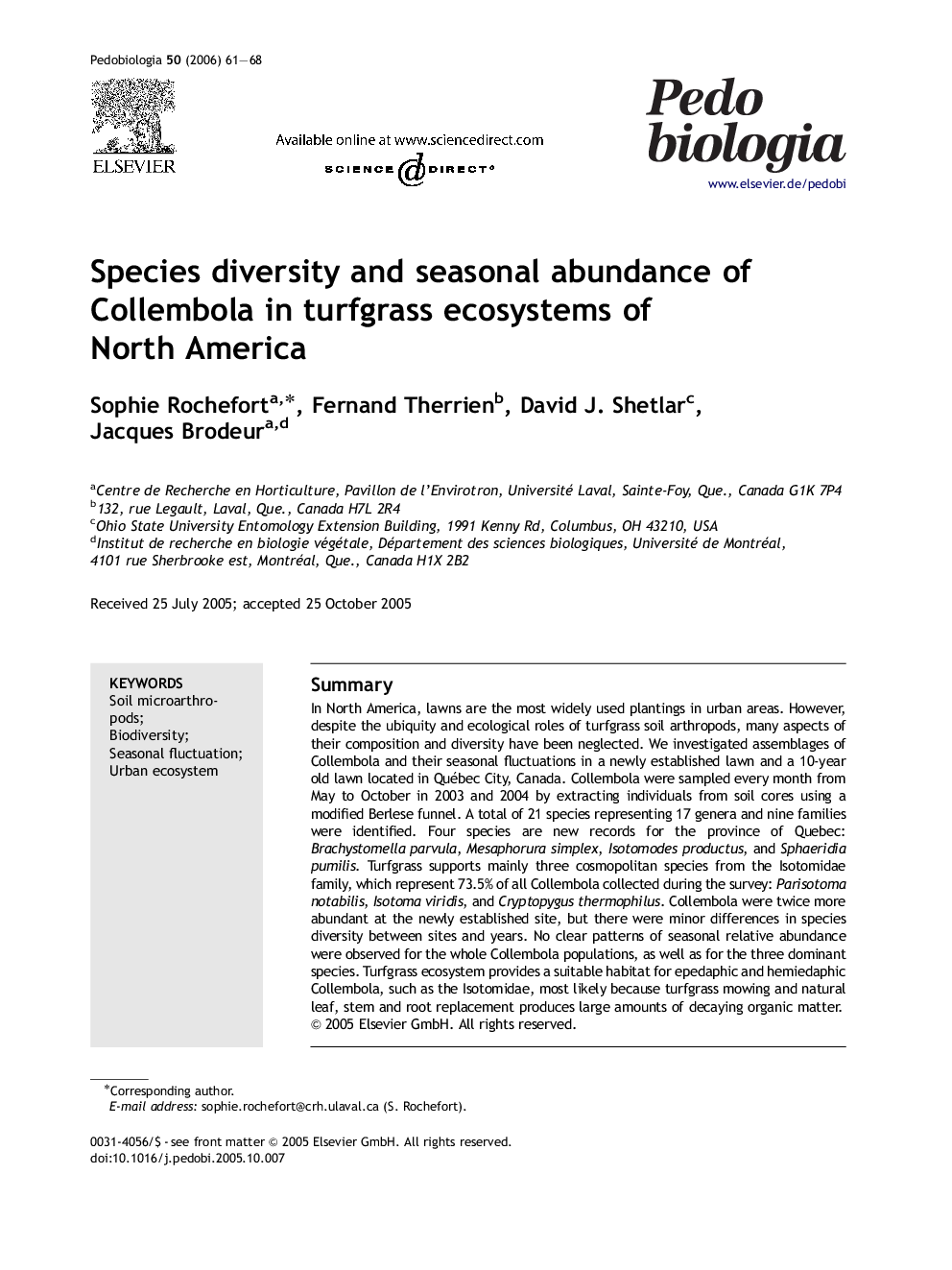| Article ID | Journal | Published Year | Pages | File Type |
|---|---|---|---|---|
| 2061430 | Pedobiologia | 2006 | 8 Pages |
SummaryIn North America, lawns are the most widely used plantings in urban areas. However, despite the ubiquity and ecological roles of turfgrass soil arthropods, many aspects of their composition and diversity have been neglected. We investigated assemblages of Collembola and their seasonal fluctuations in a newly established lawn and a 10-year old lawn located in Québec City, Canada. Collembola were sampled every month from May to October in 2003 and 2004 by extracting individuals from soil cores using a modified Berlese funnel. A total of 21 species representing 17 genera and nine families were identified. Four species are new records for the province of Quebec: Brachystomella parvula, Mesaphorura simplex, Isotomodes productus, and Sphaeridia pumilis. Turfgrass supports mainly three cosmopolitan species from the Isotomidae family, which represent 73.5% of all Collembola collected during the survey: Parisotoma notabilis, Isotoma viridis, and Cryptopygus thermophilus. Collembola were twice more abundant at the newly established site, but there were minor differences in species diversity between sites and years. No clear patterns of seasonal relative abundance were observed for the whole Collembola populations, as well as for the three dominant species. Turfgrass ecosystem provides a suitable habitat for epedaphic and hemiedaphic Collembola, such as the Isotomidae, most likely because turfgrass mowing and natural leaf, stem and root replacement produces large amounts of decaying organic matter.
